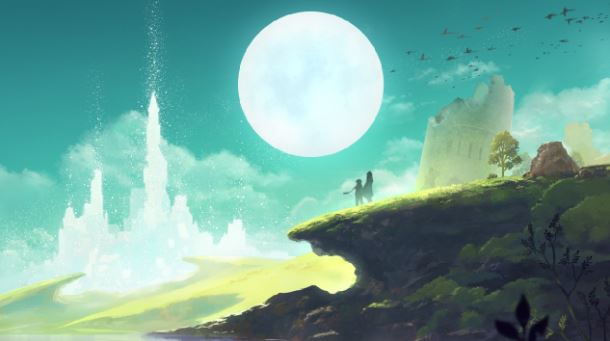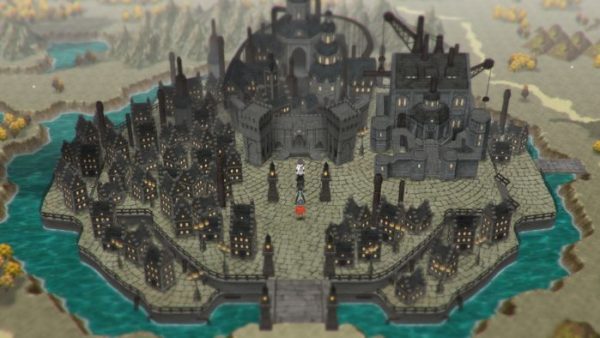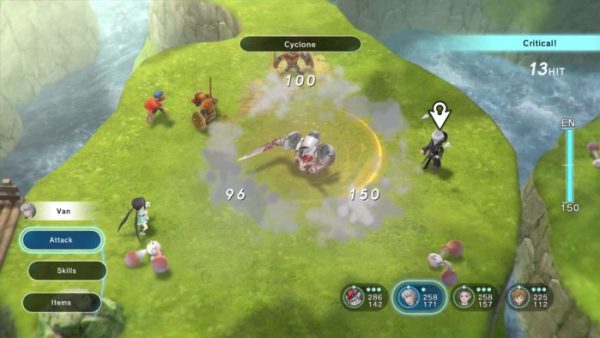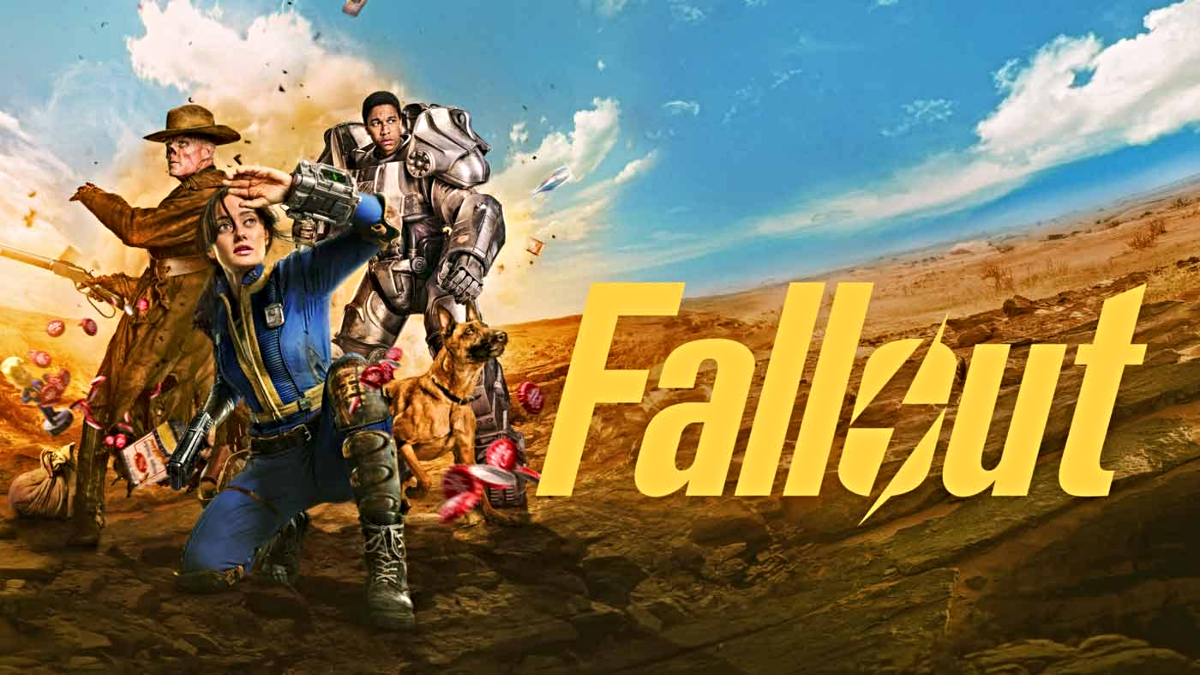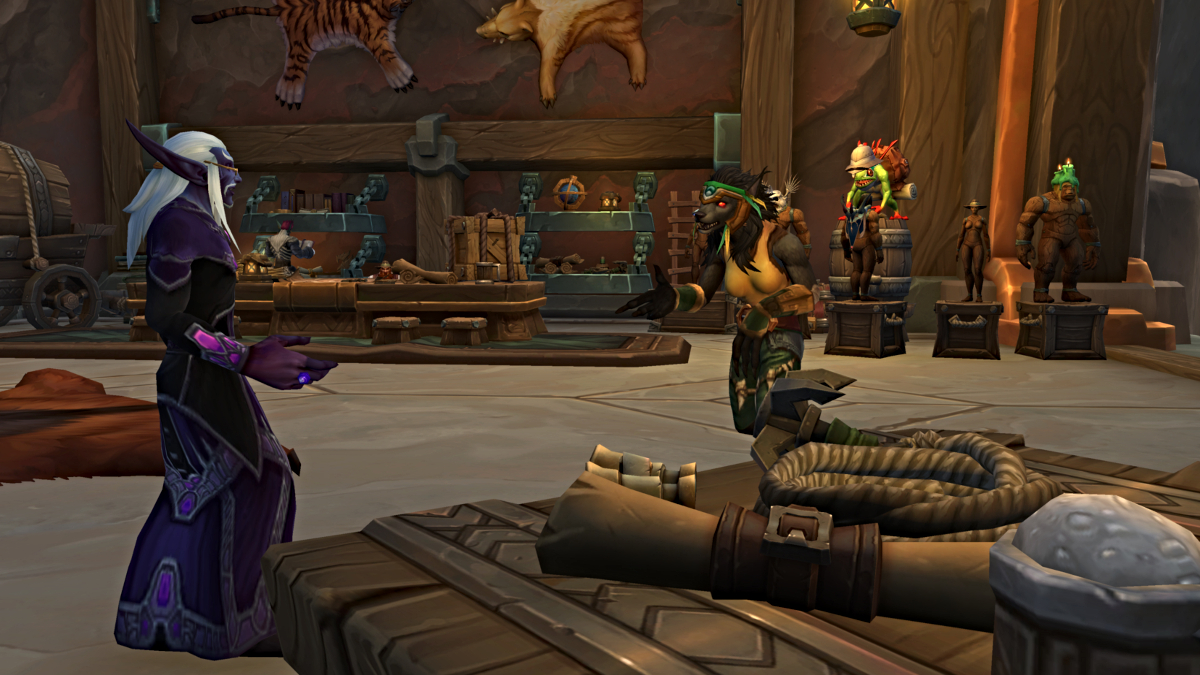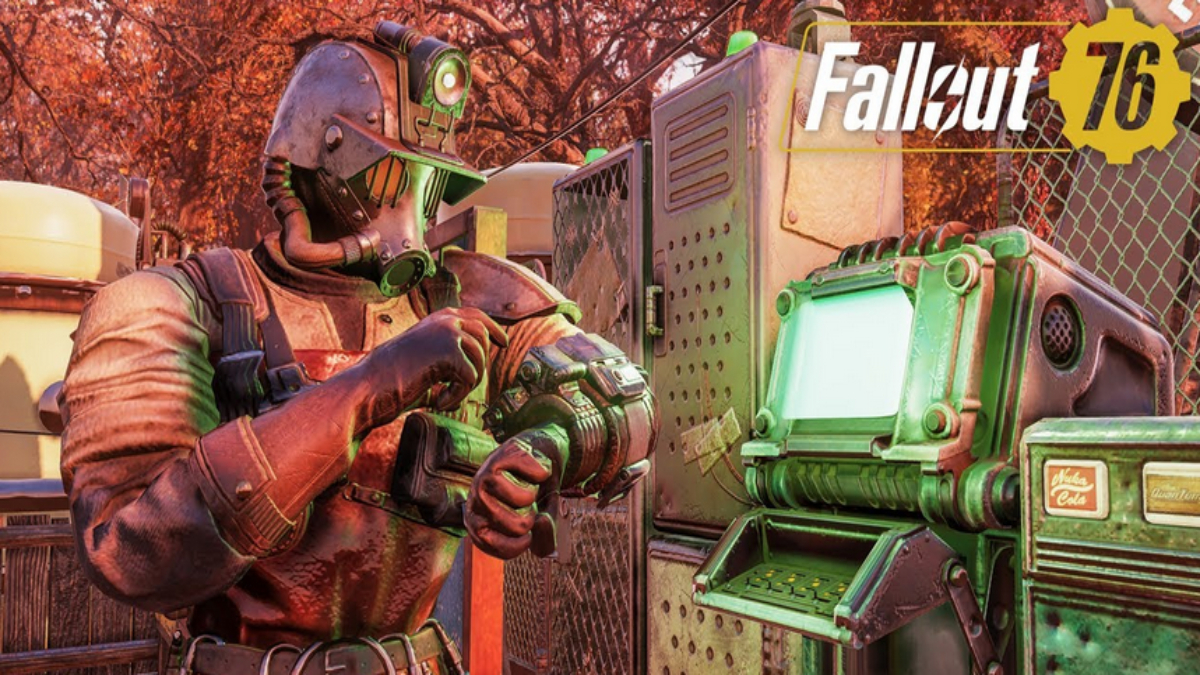Tokyo RPG Factory cut their teeth on I Am Setsuna, a smaller RPG than most modern fare that took a new approach to traditional JRPG mechanics. I missed the boat on the studio’s first outing, but I decided to not do the same with their next project, Lost Sphear. This past weekend, during New York Comic Con, I had a chance to sit down with Lost Sphear and check out how it was coming together, along with some new mechanics that left me pleasantly intrigued.
As soon as I sat down, I was treated to the opening moments of Lost Sphear. As the “Man Called King,” I took out these powerful, robot-like enemies in an attempt to save my kingdom, failing in my endeavor only to learn that this was some sort of dream. Lost Sphear actually puts players in control of a young man named Kanata in a world that hasn’t seen a monster in quite some time, at least not until one fateful morning. After a random sighting, Kanata, along with his friends Lumina and Locke, seek out a random threat in order to keep the people of Elgarthe calm and safe.
It all seemed like simple enough JRPG fare, with the monster being little more than annoying wildlife, some fishing mini-games, and an introduction to the world at large, which is presented through a beautiful overworld map that you can actually traverse. But suddenly things got weird. The alarm bell in the town went off, a sound that is reserved for monster sightings, although no real monsters were witnessed as of yet. After rushing back, the most curious thing happened. Large chunks of the world vanished, leaving massive white spaces throughout the beautiful landscape. Through this nightmarish event, Lost Sphear’s central mechanic stepped to the forefront.
The game revolves around memories and forgotten places and people. There’s a mysterious force at work and it’s been stealing chunks of dimensions, bringing them elsewhere, but also wiping them from memory and existence. Somehow Kanata is connected to these lost things, able to sense them, hear them, and even sometimes see them. Naturally, this also means that he’s the only one with the ability to bring things back to his reality. Those dreams he’d been having aren’t just dreams, they were the other dimensions calling out to him.
To be honest, it came across as a straightforward plot, one that would see Kanata and co. setting off on some grand adventure and slowly opening up the world, but Lost Sphear puts a lot of that in the player’s hands rather than through some linear narrative. Kanata can do more than just restore lost pieces of his world, he can actually collect and interact with memories, using them as a tool in his exploration, a mechanic that offers a welcome risk/reward system to the journey at large.
As players progress, they’ll collect memories from key moments in the story, in chests, and from winning battles. These come in many forms, usually connected to some type of resource you’d see in a more traditional RPG. Throughout the game, there will be many white areas, but they’re not necessarily only on the overworld (which denote the new areas you can unlock). Some are actually within worlds you’ve already gained access to, and you’ll have to make the decision of whether or not to utilize the memories you’ve collected or save them. Seeking out these small areas that you can interact with requires much more exploration at times, and just about always leads you to an area with some tough battles. Survive and you may be treated to a powerful piece of gear that has been lost to memory and time, or there may just be a rock.
It offered an interesting option to the exploration. It’s not that venturing off the beaten path in an RPG is anything new, but in Lost Sphear it’s only half the battle. You can get somewhere and be greeted by a large white space. Do you use the memories you’ve collected, or do you avoid exploring altogether to preserve your health and resources in a particularly tough dungeon? It adds a deeper layer of choice and strategy to a game that’s already rife with the two.
Combat is also an engaging experience. The folks at Tokyo RPG Factory mixed traditional turn-based combat with positional strategy. As each character in your party gets a turn you’ll be able to move them about the fighting area, which can grant some advantages or disadvantages. Some weapons can hit multiple enemies when placed in just the right angle, but that can also place that character in a spot that can see them easily surrounded and overwhelmed. Gone are the days of simply picking Attack and hoping RNG looks out for you. You’ll have to really think about what you’re doing in combat in order to come out victorious.
I learned this the hard way during one particularly tough boss fight that left my team divided and easily conquered. There are so many things to be aware of while fighting, from the shape of the space, to the different types of enemies on the field. Knowing how they move and attack will be crucial to how you position yourself and start your offensive maneuvers. It’s deep, challenging, and quite rewarding when you take out large swaths of foes all with some clever thinking.
It was great to see that level of depth reach beyond just the combat. Far too often do we see all of the attention put into one aspect of an RPG, leaving the rest feeling like little more than filler to connect you from one fight to another. Having choice in conversation, through gear, and in the chances you take to interact with the world around you is interesting. I’m not yet sure how deep those choices will go, as my two-hour demo did have me jump around and kept a lot of things in the dark in order to not spoil too much ahead of the game’s full release. However, where it’s at right now feels promising and is poised to be yet another rewarding experience from the developer who’s proving that there’s still a place for these more traditional experiences by evolving them for the modern age.

